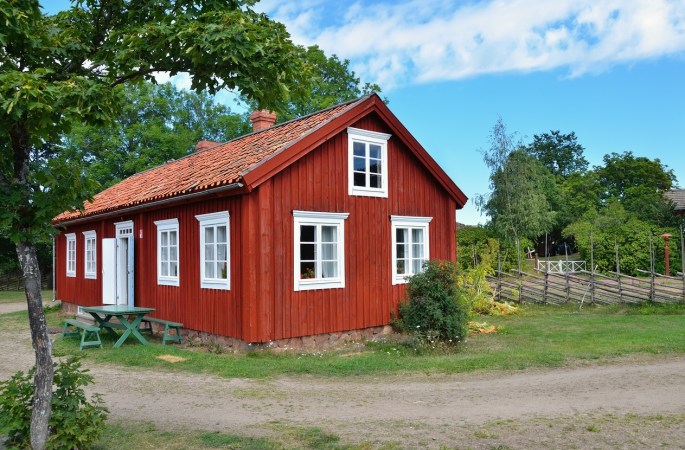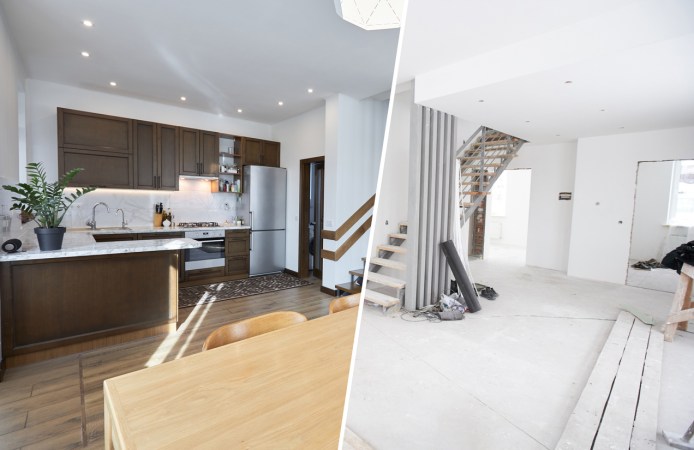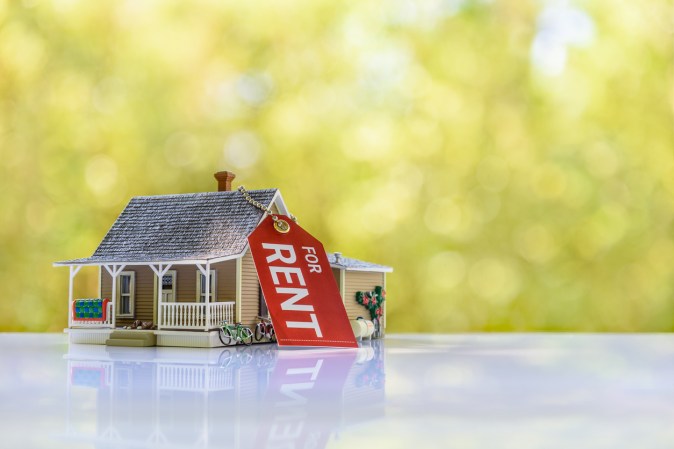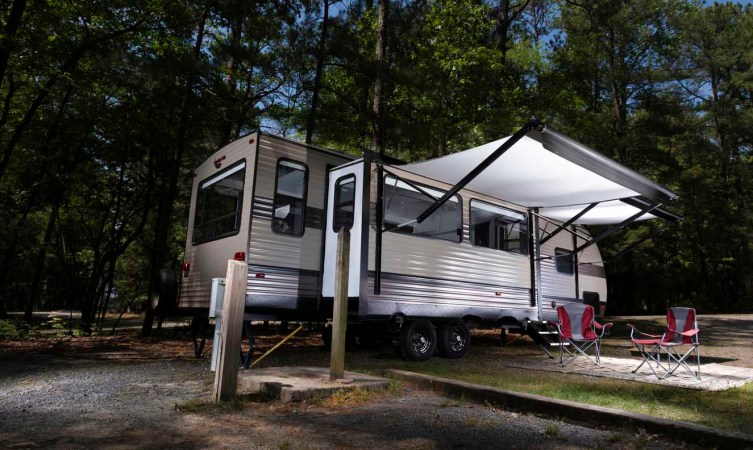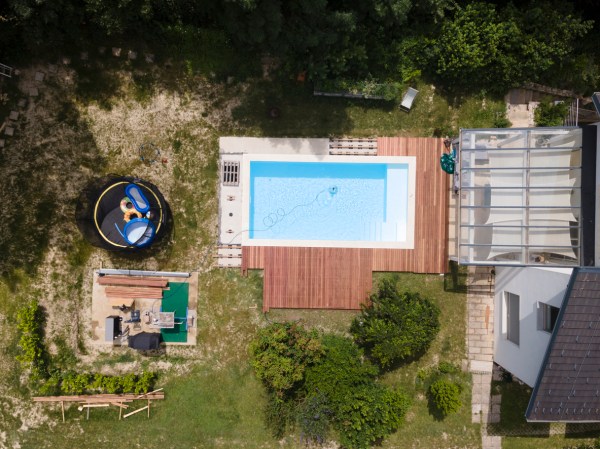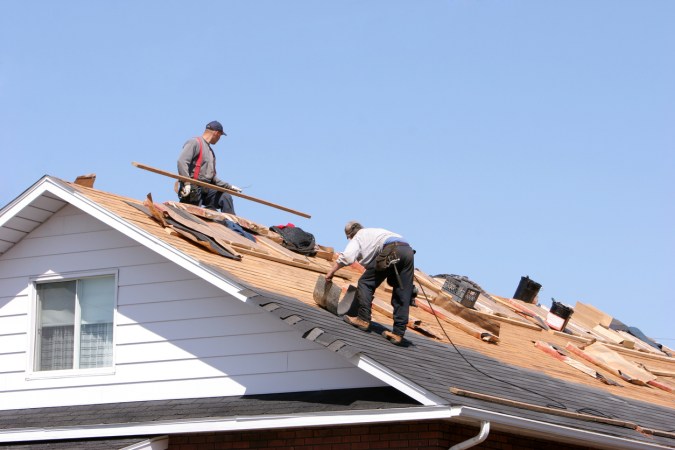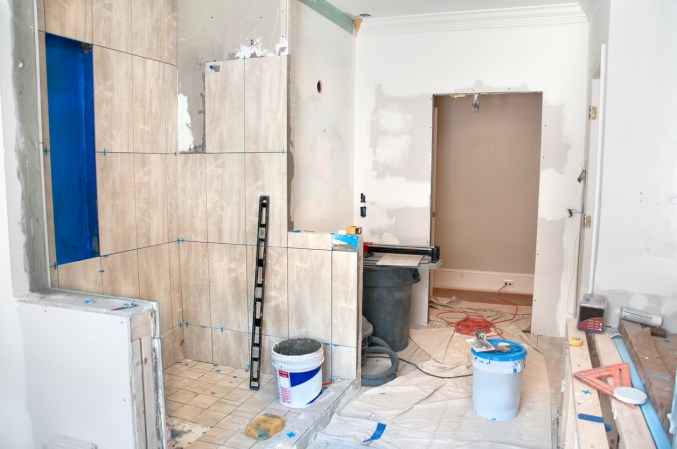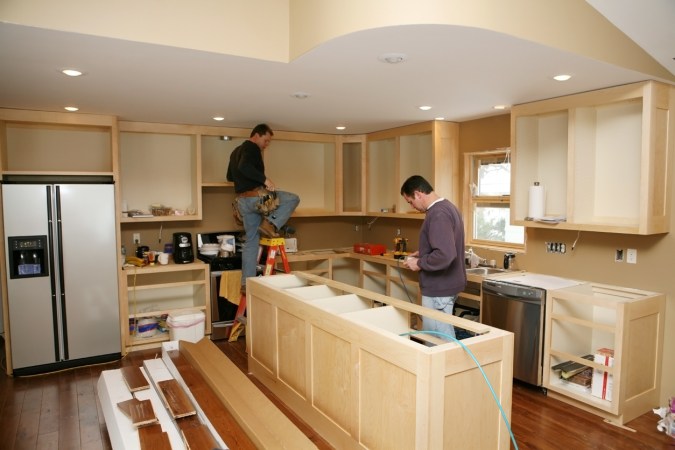We may earn revenue from the products available on this page and participate in affiliate programs. Learn More ›
The hunt for a new home can be stressful, but what happens when a home shopper doesn’t find what they’re looking for on the market? Many shoppers looking for their dream homes decide to build a home from the ground up rather than wait for the right one to become available. Like they can when buying a home, shoppers can use a loan to help cover the cost of building their new home.
Before beginning the steps to building a house, shoppers may want to learn more about how to finance building a house. Understanding how construction loans work can help home builders secure land to build their house and make their new-home dreams a reality.
Before You Begin…
There are many factors home buyers may want to consider when deciding to build a house. In addition to the cost of building a house, the time it takes to build a house could affect the benefits of building instead of buying.
In addition, home buyers are encouraged to consider their ongoing costs after building. While there will not be any home renovations to pay for with a new home, homeowners still have regular maintenance and homeowners insurance costs to consider.
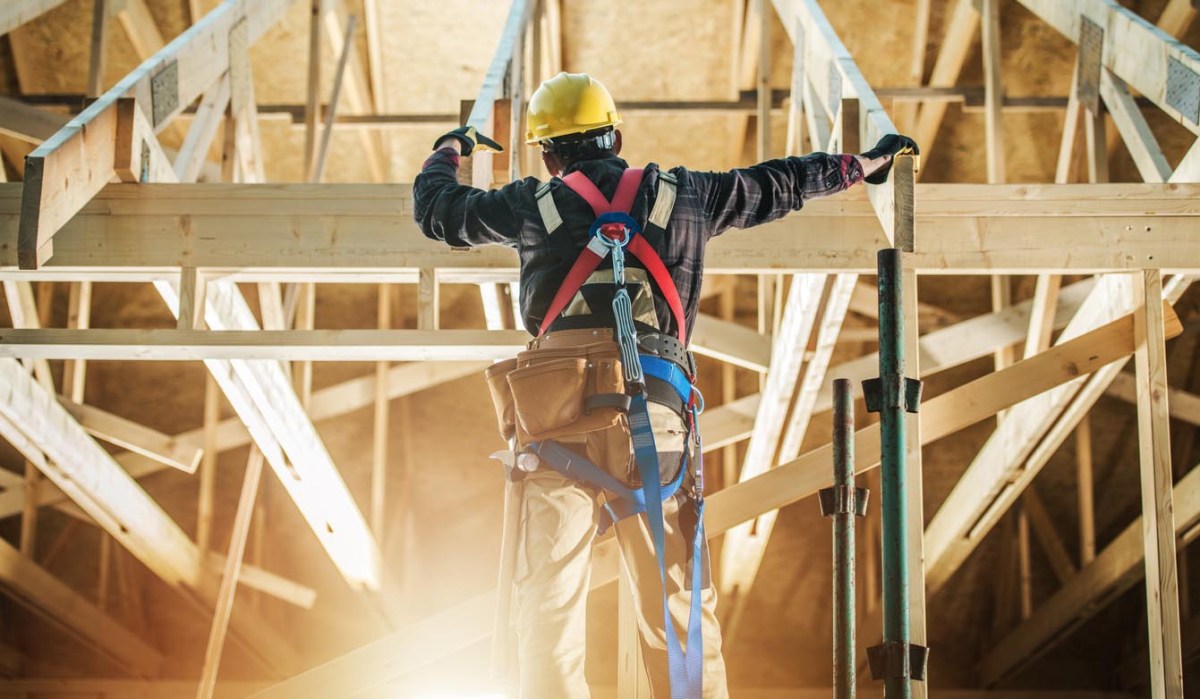
STEP 1: Determine a budget for your home-building project.
When buying an existing home, shoppers will notice that the asking price typically reflects the cost of the physical structure and the land on which it stands. Those looking for new- construction financing, however, have to consider several costs in their home-buying budgets, including:
- The cost of land on which to build the home
- Current construction and labor costs
- Expenses related to permitting and zoning for their new home
With multiple cost factors at play, shoppers who want to build a home may want to take extra time when determining their budget. The first thing to consider is whether the home builder already has land on which to build or if they need to purchase a lot. Those who don’t have a lot for their home may want to consider options like land and construction loans, which combine both the land purchase and the cost of building the new house on the property.
STEP 2: Check your credit score and make sure you have enough saved for a down payment.
After determining a budget, those looking to build their home will want to look at their overall financial situation. This includes checking their credit score to get a better idea of what types of loan terms they may qualify for. Generally, the higher a borrower’s credit score, the better loan terms they can get. For example, someone with a higher credit score may be offered lower construction loan interest rates than someone with a lower credit score applying for the same loan. While there is no standard credit score needed to qualify for home construction financing, most lenders have internal credit score requirements. Home builders who worry that their score won’t be enough to qualify for affordable construction loan rates may want to work on increasing their credit score before starting the home construction process.
In addition to checking their credit score, shoppers are encouraged to consider their down payment savings before looking to finance building a home. Many home building loans have higher down payment requirements than traditional mortgages for existing properties. Lenders typically ask for a higher construction loan down payment than they would for a loan to purchase an existing house due to the added risk of financing the property. For example, if a borrower stops paying on their construction loan before the home is built, the lender won’t have any property to sell to recoup its financial losses.
STEP 3: Choose a licensed builder to work with for the construction of your home.
Some people dream of building their dream home with their own hands. However, most people typically have to work with a qualified home builder in order to qualify for a loan for their new home. Many lenders have strict requirements when it comes to who is physically building the home. Some lenders may even have a list of the best home builders that they will work with so the borrower can choose an approved builder.
The good news for potential borrowers is that lenders who only work with approved builders often help protect the buyer as well. If a lender approves a builder, there’s a good chance the construction company or contractor has a good track record of building homes on time and budget. If a lender doesn’t offer a list of approved builders, the home buyer will likely need to do their due diligence when looking for the best custom home builders to make sure their construction project gets completed on time and within their budget.
STEP 4: Consider a construction-to-permanent loan, which funds the building period and converts to a permanent mortgage once the build is complete.
Many people who build their homes choose a construction-to-permanent loan to make financing building a house more simple. With a construction-only loan, the homeowner would have to pay off their construction loan and then shop around for a new mortgage once the home is complete. Construction-to-permanent mortgages, on the other hand, roll this process into one loan. It’s typical for borrowers to make interest-only payments on their loans during the construction process.
Homeowners might want to choose a construction-to-permanent mortgage from one of the best construction loan lenders if they don’t want to pay two sets of closing costs. Additionally, a construction-to-permanent loan might be a good option for homeowners who simply don’t want to deal with the hassle of shopping for the best mortgage rates or setting up a new loan. Many homeowners find the ease of paying for one loan—and having one less thing to worry about during the building process—to be worth the potential of higher interest rates from a construction-to-permanent loan.
STEP 5: Another option is a construction-only loan, which also covers the building period but must be paid in full once construction is finished.
Traditional construction loans for homes work by financing the initial building period of the home’s construction. A construction loan might include funds for labor, construction materials, and permits or other administrative costs. This type of construction loan is typically short-lived, with loan terms typically lasting between 12 to 18 months. At the end of the loan term, the borrower generally has to pay the remaining balance of the loan in full. Many borrowers apply for a traditional mortgage at the end of their construction-only loan since the house is complete and qualifies for a traditional mortgage loan.
The downside of a construction-only loan is that the borrower often has to pay closing costs and other fees to secure the new mortgage. This could cost the borrower several thousand dollars in appraisals and other fees. The biggest benefit to this method, however, is the ability to shop around for the most favorable mortgage terms. With the construction loan and new mortgage not being tied together, the borrower can potentially take advantage of better loan offers. For example, a borrower could increase their credit score in the time it takes to build the home, which would give them access to better interest rates on their mortgage than they would have had at the beginning of the construction loan.
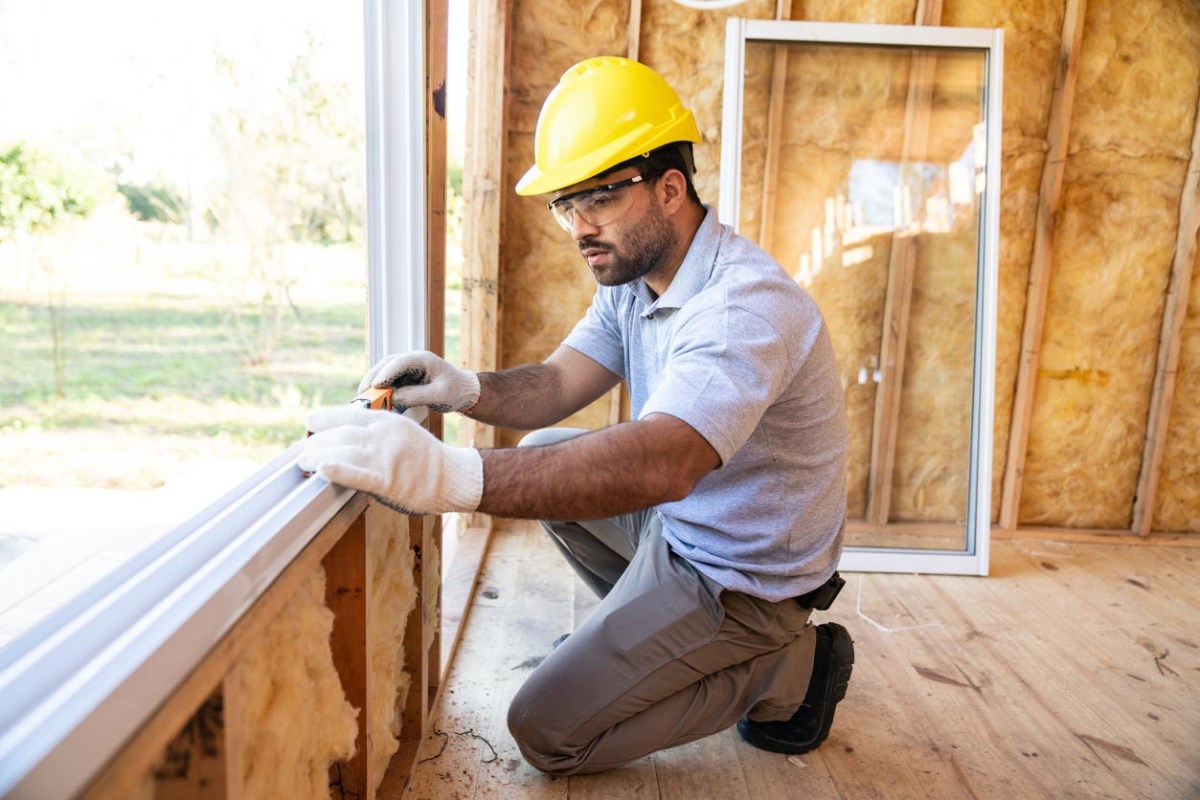
STEP 6: A renovation loan may be a good option for upgrading an existing home as an alternative to building a new one.
Building a house from scratch is often more expensive than purchasing an existing property. Shoppers who find they can’t afford building a new home, but are having trouble finding what they want on the market, might want to consider taking out a loan to purchase a home and pay for home renovations. Renovation loans provide funds to both purchase and renovate an existing property. Unlike construction-only loans, which require the borrower to pay off the loan and take out a new mortgage after construction, renovation loans give borrowers funds to complete the whole renovation process in one loan. In addition, many government-backed mortgage programs offer renovation loan options, such as the USDA renovation loan program or FHA 203(k) loans.
Renovation loans may also be a good option for investors looking for the best investment property loans or the best loans for flipping houses. Renovation loans let the investor combine the cost of the property with the cost of renovations. Once the property is complete, the investor doesn’t have to deal with closing multiple loans to sell the property.
STEP 7: If you are a professional builder planning to construct the home yourself, consider an owner-builder loan.
Many lenders won’t offer construction loans to someone planning to build their home on their own without an approved contractor. The exception to this is borrowers who are also professional builders, contractors, or experienced in the home-building process. Lenders will generally ask potential owner-builders to provide extensive home-building plans as well as documentation of their home-building experience. Most owner-builder loans are offered either as construction-only loans or construction-to-permanent loans.
Borrowers who are approved for an owner-builder loan may still want to save up a significant amount of money for unexpected expenses. This will help the owner-builder cover unforeseen expenses during the building process that may not have been included in the original loan amount.
STEP 8: If you opt for a construction-only loan, you’ll need to get an end loan, or a regular mortgage, once the home is built.
Construction-only loans provide funding for the initial building of a home. Once construction of the new home is complete, borrowers will need to pay off the remaining balance of their construction-only loan in full. Most borrowers opt to take out a new traditional mortgage, such as a conventional mortgage or FHA loan, to cover the balance of their construction loan. This new loan, called an end loan, works the same as a regular mortgage because the home is now built.
The process of securing an end loan is the same as for any other traditional mortgage. Borrowers are encouraged to shop around for the best end loan for their new-construction project. Shopping around usually involves getting prequalified with various mortgage lenders to better understand what types of rates a borrower could receive. As with any loan product, the borrower will have to meet lender qualifications for the mortgage, such as credit score or debt-to-income ratio requirements.
STEP 9: Once you’ve chosen the right type of loan, gather the paperwork needed to apply.
The right loan for a new-construction build can help borrowers cover their construction costs in affordable monthly payments. Borrowers may want to consider all of their loan options to find the loan type that makes the most sense for their unique situation. For example, an experienced home builder with a significant down payment may want to look for an owner-builder loan. On the other hand, a first-time homeowner with limited funds may want to consider an FHA renovation loan instead of building a new home from the ground up.
Those wanting to build a home may want to reach out to qualified builders in their area before applying for a home construction loan. Depending on demand, some builders may be several years out from taking on any new construction projects. After finding a builder, the borrower can begin gathering the paperwork they’ll need to apply for a construction loan. Common required documents include proof of income, the contract with the builder, and plans for the home. The lender will also run a credit check on the applicant, and each lender may have slightly different minimum credit score requirements.
STEP 10: Get prequalified with several lenders and compare offers to find the best rate and terms.
Getting a loan prequalification—and later a preapproval—can help borrowers save time and money during the home-building process. A prequalification is a less formal document used by lenders to let a borrower know what type of loan terms they might qualify for. Generally, getting prequalified won’t affect a borrower’s credit score. However, a prequalification isn’t a guaranteed offer for a loan, but rather a way for borrowers to get an idea of their qualifications, such as how much a lender might let them borrow. The borrower can use a prequalification to help determine their budget before going to home builders.
A preapproval, on the other hand, is a letter or document from a mortgage lender stating how much they’re prepared to lend the borrower. The lending offer is generally guaranteed, so long as the home meets the lender’s requirements and the borrower’s financial situation doesn’t drastically change before they sign the loan agreement. Getting a preapproval generally requires a hard credit inquiry, which can temporarily affect a borrower’s credit score. With a preapproval in hand, though, a borrower can work with a builder to design a home that meets their approved loan budget.
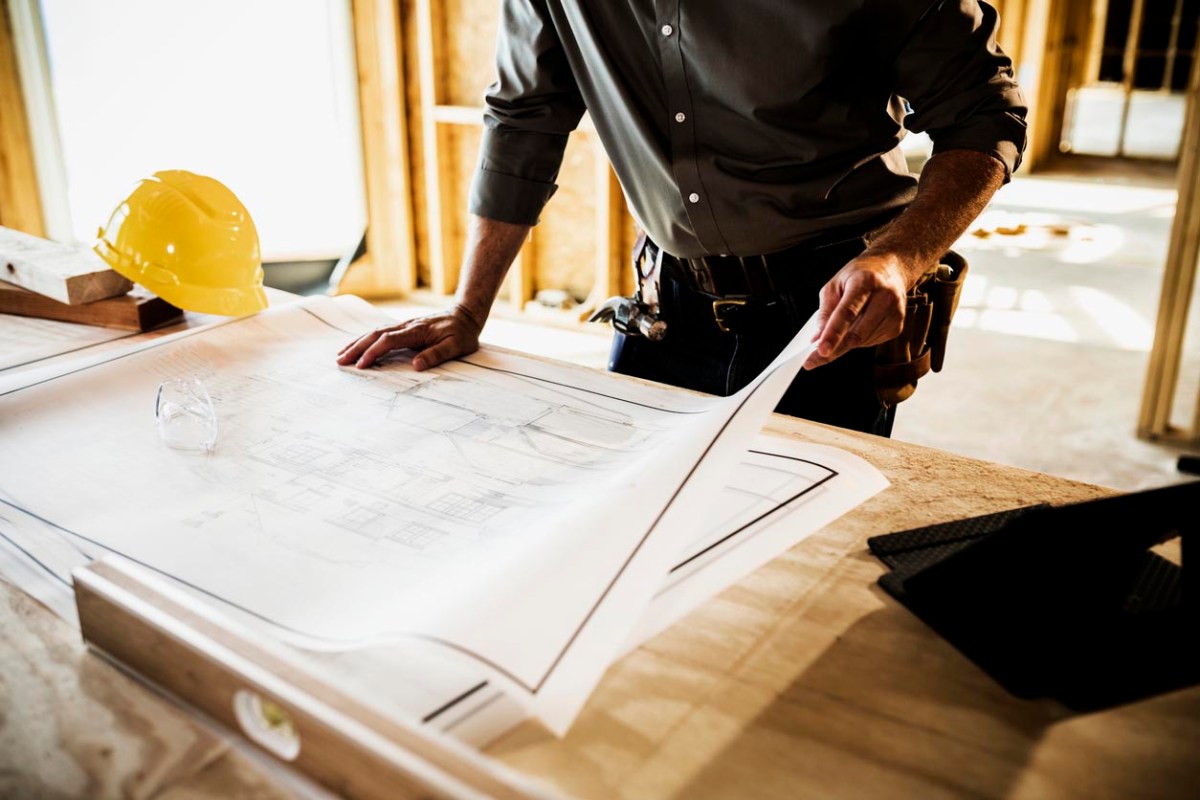
STEP 11: Apply for the loan and get a homeowners insurance policy with builder’s risk coverage.
Although a preapproval document can be an important tool for securing a builder’s contract and land for a home, it’s not the same as a loan agreement. Borrowers will typically also need to complete a loan application from their lender. In the application, the lender will likely ask for documents typical of any mortgage product, such as proof of income or employment. Borrowers who apply for a construction loan will also likely need to provide documents related to the home- building process, including the contract with the builder and plans for the home.
As with most regular mortgages, construction loan lenders generally require borrowers to carry coverage from one of the best homeowners insurance companies (like Allstate or Lemonade), even though the home isn’t yet built. The borrower will need to look for a homeowners insurance policy that includes builder’s risk coverage. Builder’s risk coverage is a type of insurance that helps protect a home during the construction process. If the home is damaged by a covered peril while it’s under construction, such as a fire, the builder’s risk insurance can help pay to repair the damage.
STEP 12: Receive funds and start building your dream home.
Loan applicants who meet all of the construction loan requirements, such as credit score and income qualifications, usually receive a loan agreement offer. A home loan doesn’t go into effect until the borrower signs the offered agreement. It’s typically in the borrower’s best interest to carefully read their loan agreement before signing. Reading and understanding the loan agreement beforehand can help a borrower avoid unexpected and unwelcome terms related to their loan.
The final step in financing a new home build is for the borrower to receive their funds and start the building process. The time it takes to receive funds can vary between lenders. Borrowers may want to check with their lender and home builder before signing the loan agreement so they know how the funds will arrive and how they can pay their builder. Some construction loans have specified draw periods, such as a certain amount per month.
Following this 12-step process can help homeowners-to-be secure a mortgage or construction loan and build their dream home. Before committing to building a new home, however, it’s important to consider the time it will take to build a home. Would-be homeowners may also want to carefully add up the expected cost of building a new home, as it may be more expensive than buying an existing home.


